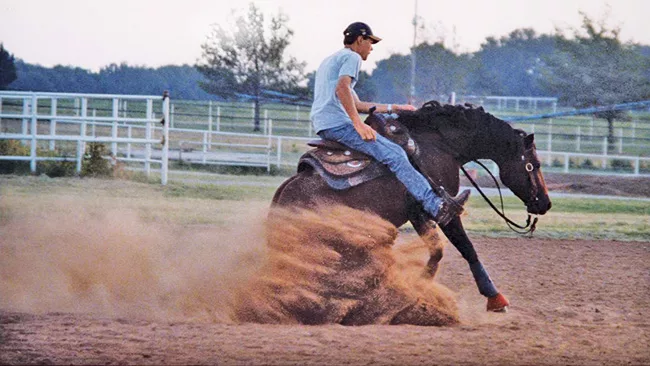American Farriers Journal
American Farriers Journal is the “hands-on” magazine for professional farriers, equine veterinarians and horse care product and service buyers.

Figure 1 above.
While this article deals with how reining horses tend to wear down their lateral heel, similar issues occur across all disciplines. Whether it’s because of limb deviations, mechanics, compensation adaptation, locomotion, training or demands of the sport, many other disciplines, including dressage and jumpers, would benefit from “the slant wedge” if their shoer was not in a position to realign the heels through trimming.
At the same time, it’s important to assess the long-term wear patterns, particularly when dealing with limb deviations. Seek veterinary evaluation of joint and soft tissue pathology in the limb and phalanges before large trimming and shoeing corrections are made.
When I start working on a reining horse, the first thing I do is check the balance of its feet, as every shoer is trained to do (Figure 1).
It is important to view the balance from the side of the foot with a lateral view of the dorso-palmar balance. It’s also critical to make an evaluation from the front of the foot with a dorsa-palmar view of the medial-lateral balance.
The reason I place a little more emphasis on balance is that over the years I’ve found it has a profound effect on how horses use their backs, since the correct use of the back is vital for a reining horse.
I’ve also found a relationship between leg position, heel height and caudal support. Over the years, I’ve found that horses with a steep-footed front leg (and/or…